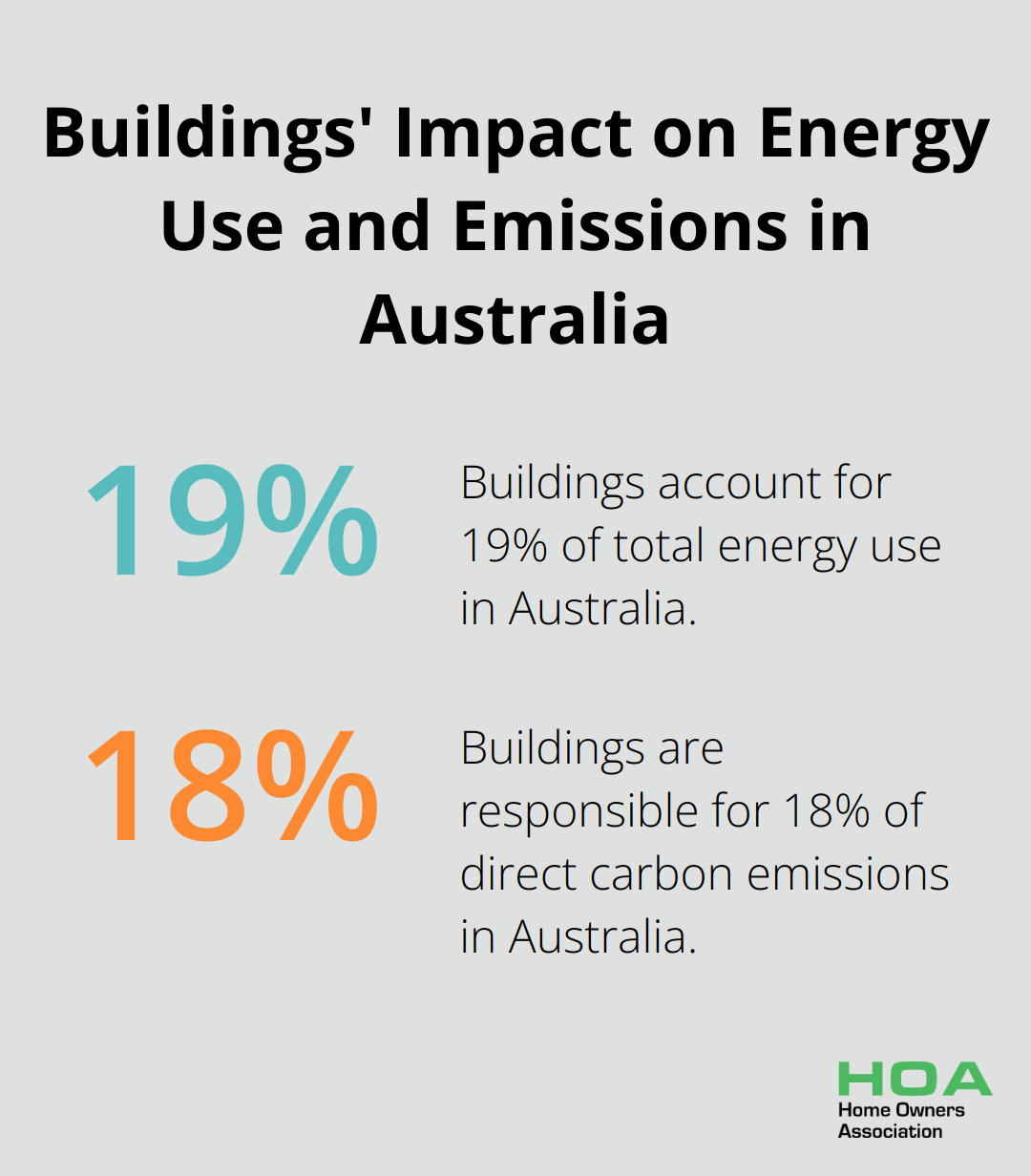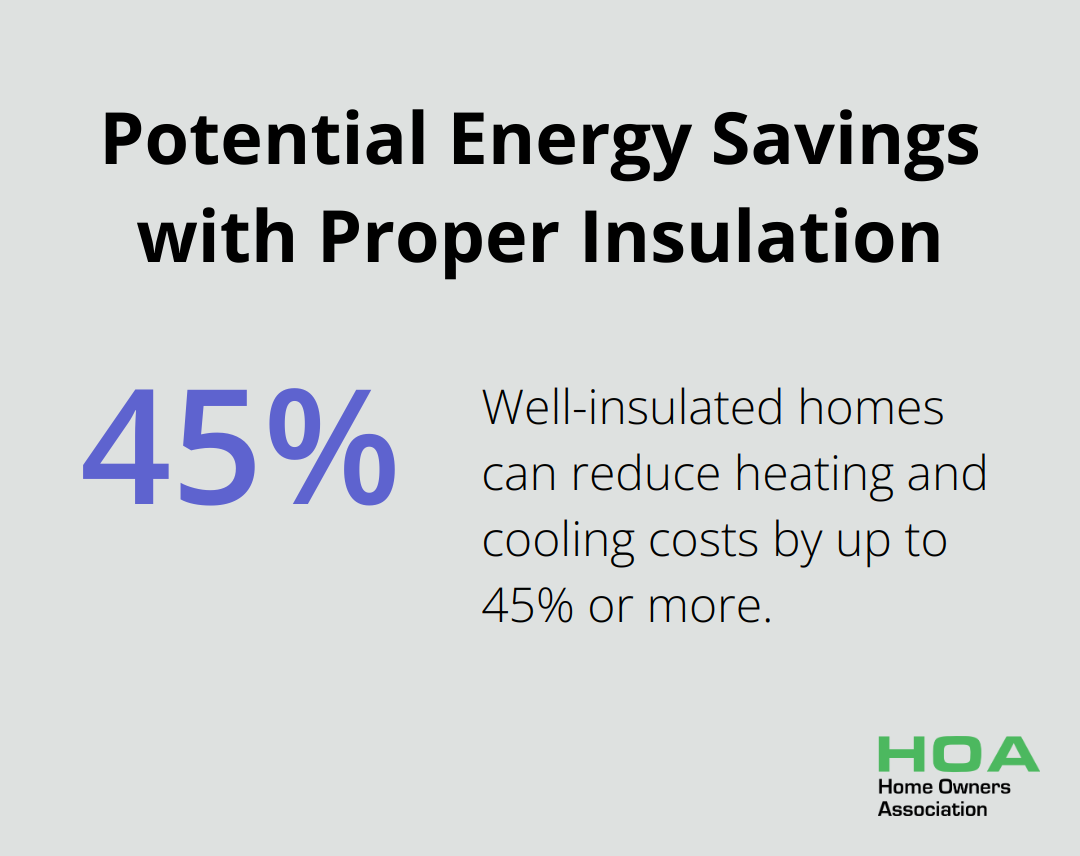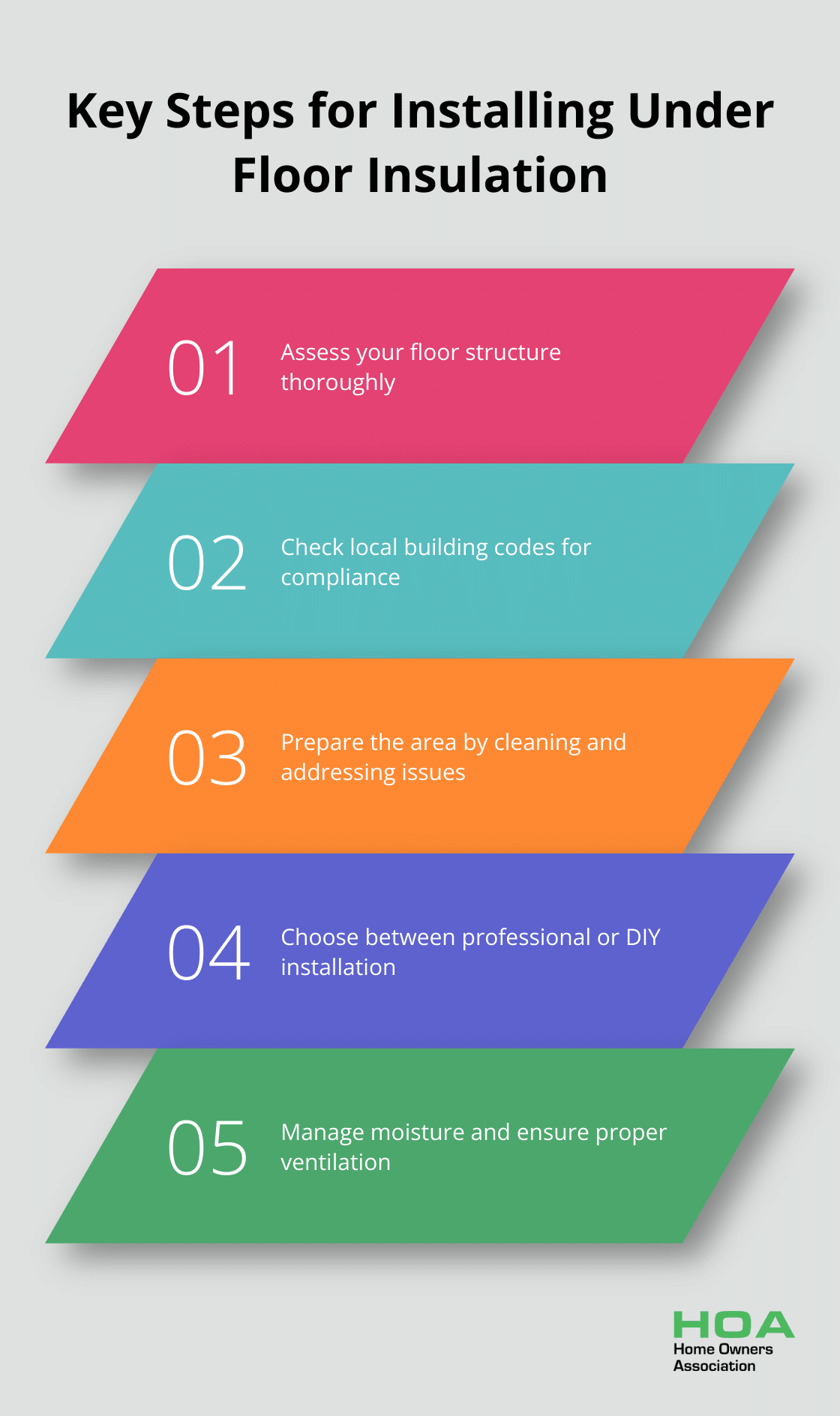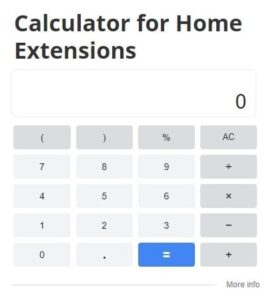
At Home Owners Association, we understand the importance of a comfortable and energy-efficient home. Under floor insulation options can significantly impact your living space and utility bills.
In this blog post, we’ll explore various materials and methods to insulate your floors effectively. We’ll also discuss the benefits and installation considerations to help you make an informed decision for your home.
Why Under Floor Insulation Matters
Under floor insulation transforms homes, boosting energy efficiency and comfort. Home Owners Association has witnessed the significant impact of this often-overlooked home improvement aspect.
Slash Energy Costs
Under floor insulation offers substantial energy savings. Households typically save around 15% on heating and cooling bills if the walls are insulated. This translates to real savings, with most homeowners recouping their investment within 3-5 years through reduced heating and cooling expenses.
Create a Cozy Living Space
Under floor insulation dramatically enhances home comfort. Cold floors become a thing of the past, as insulation blocks chilly air from seeping through floorboards. Homes with suspended timber floors experience immediate benefits after installation.
Soundproof Your Sanctuary
Under floor insulation reduces noise transmission (an often-overlooked advantage). This proves especially valuable in multi-story homes or apartments where sounds travel between floors. Materials like fiberglass batts or spray foam insulate against temperature changes and dampen sound, creating a more peaceful living environment.
Reduce Environmental Impact
Lower energy consumption doesn’t just save money – it shrinks your carbon footprint. Buildings account for around 19% of total energy use and 18% of direct carbon emissions in Australia. Floor insulation represents a concrete step towards a more sustainable future.

Choose the Right Solution
Selecting the appropriate under floor insulation depends on various factors (climate, floor type, budget). Home Owners Association recommends consulting with experts to determine the best option for your specific needs. Professional guidance ensures optimal performance and longevity of your insulation investment.
As we explore the various under floor insulation options available, keep these benefits in mind. The next section will break down different insulation materials, helping you make an informed decision for your home improvement project.
What Are the Best Under Floor Insulation Materials?
Under floor insulation transforms home comfort and energy efficiency. Let’s explore the top options available for Australian homeowners.
Fiberglass Batts: The Cost-Effective Classic
Fiberglass batts remain a popular choice for under floor insulation, particularly for suspended timber floors. These pre-cut panels are easy to handle and install (making them a favorite for DIY enthusiasts). Fiberglass batts offer an excellent balance of performance and affordability.
Effective floor insulation can significantly reduce heating and cooling costs. According to CSIRO, going from no insulation to a well-insulated home could reduce your heating and cooling costs by 45 percent or even more. Fiberglass batts contribute significantly to this saving, especially when installed correctly without gaps or compression.

Spray Foam Insulation: Maximum Performance
For those who seek top-tier insulation, spray foam is the gold standard. Available in open-cell and closed-cell varieties, this material provides superior air-sealing properties. Closed-cell foam offers excellent moisture resistance, making it ideal for damp areas or regions prone to flooding.
While more expensive, spray foam’s performance often justifies the cost. Its ability to fill every nook and cranny results in a seamless barrier against heat loss and air infiltration. Professional installation ensures optimal results and safety.
Rigid Foam Boards: High R-Value Solution
Rigid foam boards, such as extruded polystyrene (XPS), excel at insulating concrete slab floors. These boards boast high R-values, which means they provide significant insulation with minimal thickness. This characteristic makes them particularly useful in spaces where height is at a premium.
XPS boards resist moisture, making them suitable for use in crawl spaces or areas with potential dampness. While installation can be more complex than batts, the long-term performance of rigid foam boards often outweighs the initial challenges.
Reflective Foil: Combating Radiant Heat
In Australia’s warmer regions, reflective foil insulation shines. This material excels at reflecting radiant heat, keeping homes cooler during scorching summers. When combined with bulk insulation, reflective foil creates a comprehensive thermal barrier suitable for various climates.
Reflective foil requires an air gap to function effectively. Proper installation maximizes its benefits. In tropical and subtropical areas, this material can significantly reduce cooling costs and improve overall comfort.
The choice of under floor insulation material depends on various factors, including your home’s structure, local climate, and budget. While DIY installation works for some materials, professional assessment and installation often lead to superior results. The National Construction Code (NCC) sets minimum R-value requirements for insulation, but exceeding these standards can further enhance your home’s energy efficiency.
Now that we’ve covered the best under floor insulation materials, let’s move on to the installation process and important considerations to keep in mind.
How to Install Under Floor Insulation
Assess Your Floor Structure
Before installation, you must thoroughly examine your floor structure. Different floor types need specific insulation approaches. Suspended timber floors typically allow access from underneath, while concrete slabs may require insulation installation from above.
The Australian Building Codes Board sets minimum R-value requirements for floor insulation, which vary by climate zone. In Climate Zone 8, the deemed floor construction resistance for the building is R=3.5. Always check local building codes to ensure compliance.

Prepare for Installation
Effective insulation requires proper preparation. Clean the area thoroughly and remove any debris or old insulation. Look for signs of moisture, pest infestations, or structural issues that need addressing before installation.
For suspended floors, ensure adequate clearance for installation and future inspections. Rigid board materials can be installed with air gaps of as little as 10mm, and some pre-manufactured products may have 5mm gaps.
Choose Between Professional and DIY Installation
While some homeowners opt for DIY installation, professional installation often produces superior results. Professionals have the tools and expertise to ensure proper fit and coverage, which maximizes insulation effectiveness.
Experts understand local climate requirements and can recommend the most suitable materials for your specific situation. They can also navigate complex installations (such as those involving moisture barriers or ventilation systems).
Manage Moisture and Ventilation
Moisture control plays a vital role in under floor insulation. Improper moisture management can lead to mold growth and reduced insulation effectiveness. Install a vapor barrier if needed, especially in areas with high humidity or moisture issues.
Adequate ventilation is equally important. The Building Code of Australia mandates specific ventilation requirements for sub-floor spaces. You’ll typically need at least 7,000 square millimeters of unobstructed ventilation area per square meter of floor area.
For concrete slabs, consider using closed-cell foam or extruded polystyrene, which offer excellent moisture resistance. These materials can help prevent moisture from seeping through the concrete and into your living space.
Select Appropriate Materials
Choose insulation materials that suit your specific floor type and climate. For suspended timber floors, fiberglass batts remain a popular and cost-effective choice. Spray foam insulation provides maximum performance but comes at a higher cost. Rigid foam boards work well for concrete slabs, offering high R-values with minimal thickness.
In warmer Australian regions, reflective foil insulation excels at combating radiant heat. When combined with bulk insulation, it creates a comprehensive thermal barrier suitable for various climates.
Final Thoughts
Under floor insulation options transform homes, boosting comfort and energy efficiency. The right solution reduces energy bills, enhances temperature control, and creates a quieter living environment. These benefits extend beyond personal comfort, contributing to a reduced carbon footprint and a more sustainable future.
Selecting the appropriate insulation material maximizes these advantages. Your choice should depend on your floor structure, local climate, and budget considerations. Professional assessment and installation often lead to superior results, ensuring that your insulation investment pays off in the long run.
Home Owners Association supports you in creating a more comfortable and energy-efficient home. Our expertise can help you make informed decisions about under floor insulation options and other home improvement projects. For personalized guidance in Melbourne, Australia, visit Home Owners Association to access our resources and support.





